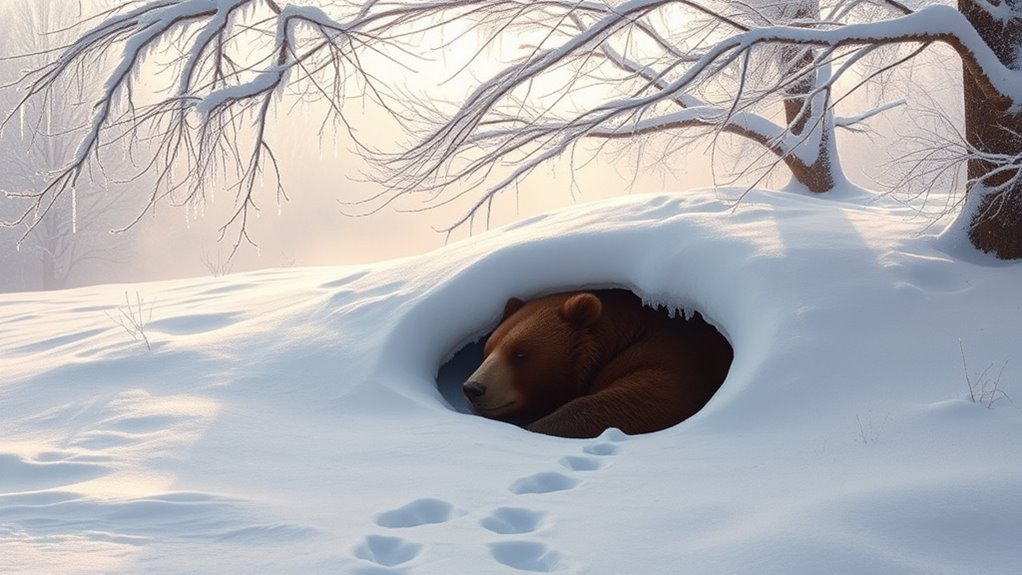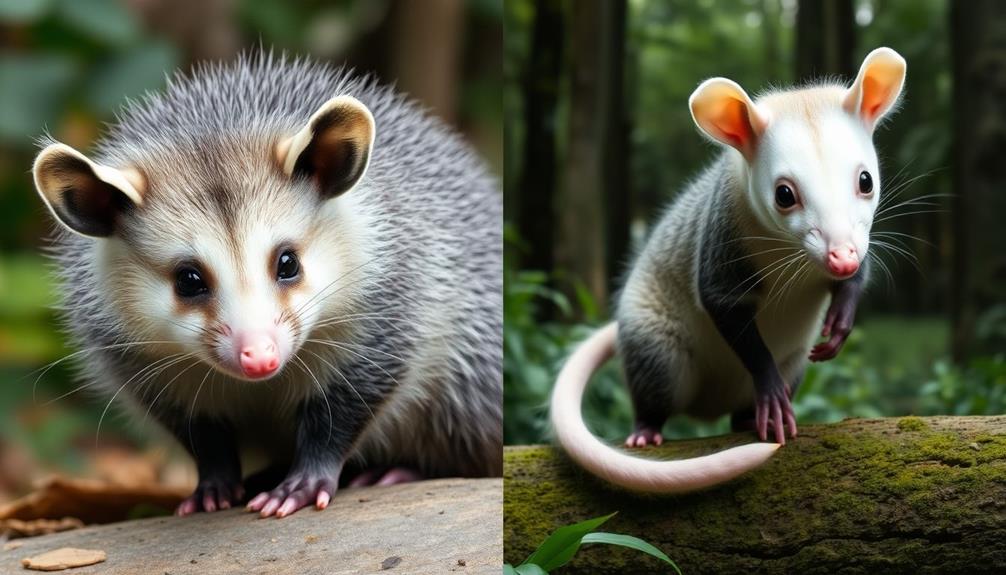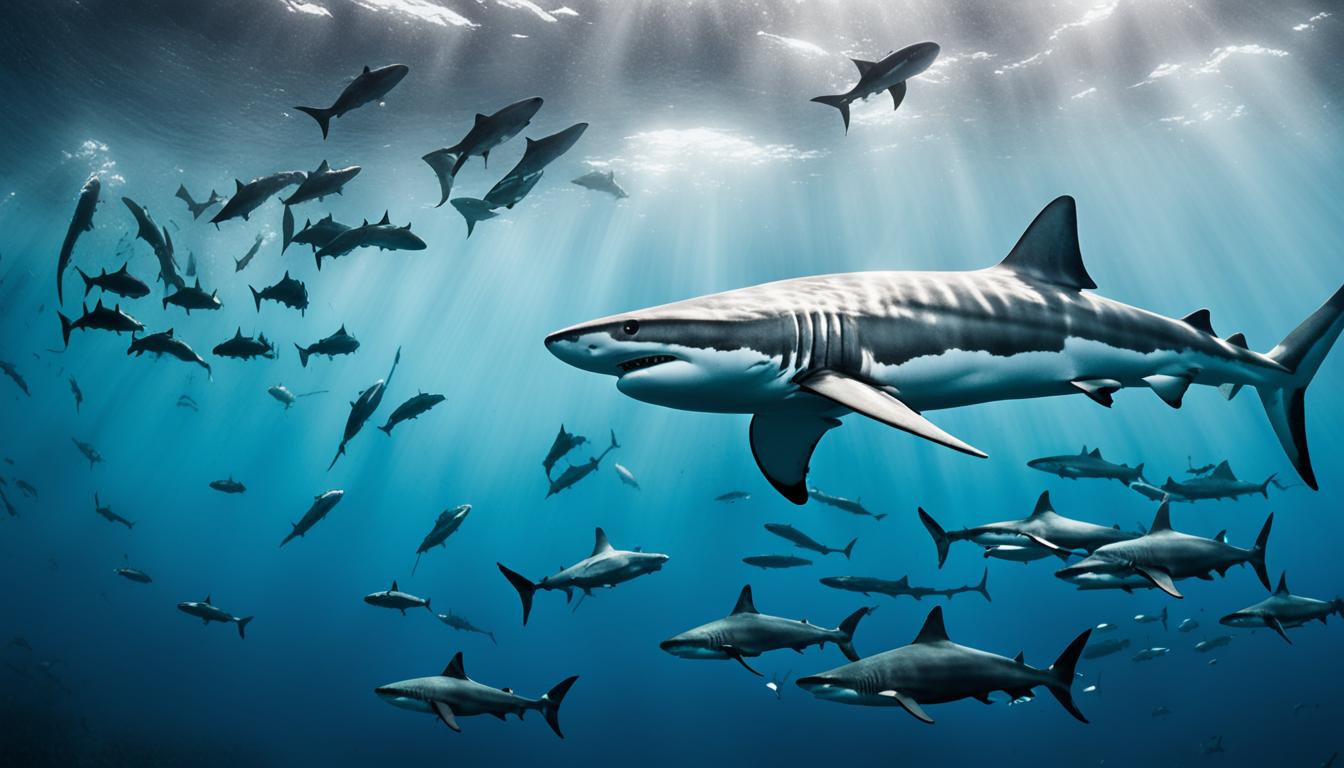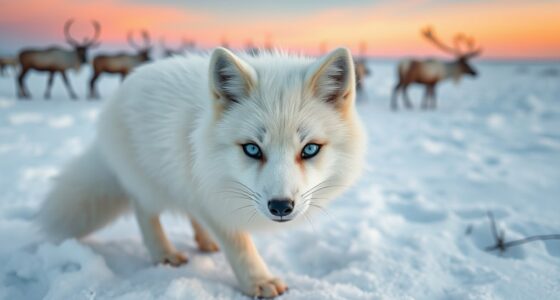Some animals hibernate to survive harsh conditions and conserve energy when food is scarce. By drastically lowering their metabolic rates and body temperatures, they can endure extreme weather for months. Smaller hibernators often curl up to retain heat, while others, like Arctic ground squirrels, may wake periodically to eat and avoid predators. This fascinating survival strategy not only enhances their chances of survival but also has intriguing implications for science and medicine, which you'll discover more about.
Key Takeaways
- Hibernation allows animals to conserve energy during harsh weather conditions when food is scarce.
- It significantly reduces metabolic rates and body temperatures, enhancing survival chances.
- Hibernating species minimize activity, reducing predator detection and increasing their lifespan.
- Seasonal hibernation helps avoid food shortages by synchronizing activity with available resources.
- Climate change impacts threaten hibernators by causing premature awakenings and increased predator presence.
Understanding Hibernation: A Survival Strategy
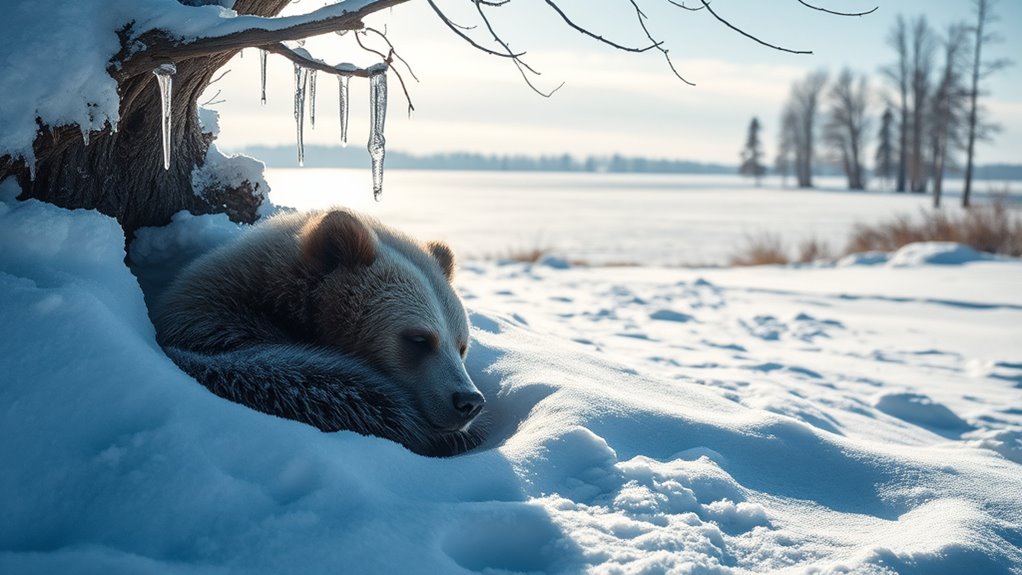
Hibernation is an incredible survival strategy that allows small animals to endure harsh conditions when food is scarce and temperatures drop. By entering a state of hibernation, these animals can conserve energy, adapting to extreme weather and predator threats.
Smaller hibernators, like hedgehogs and bats, curl into a ball, minimizing heat loss and enhancing their chances of survival. Some species, such as Arctic ground squirrels, can hibernate for up to seven months at frigid temperatures around -3°C.
Notably, hibernation isn't always constant; animals like the common poorwill can wake periodically to forage or mate. This remarkable adaptation not only helps them escape harsh environments but also guarantees they can thrive during challenging times, demonstrating the evolutionary significance of hibernation.
The Physiology of Hibernation
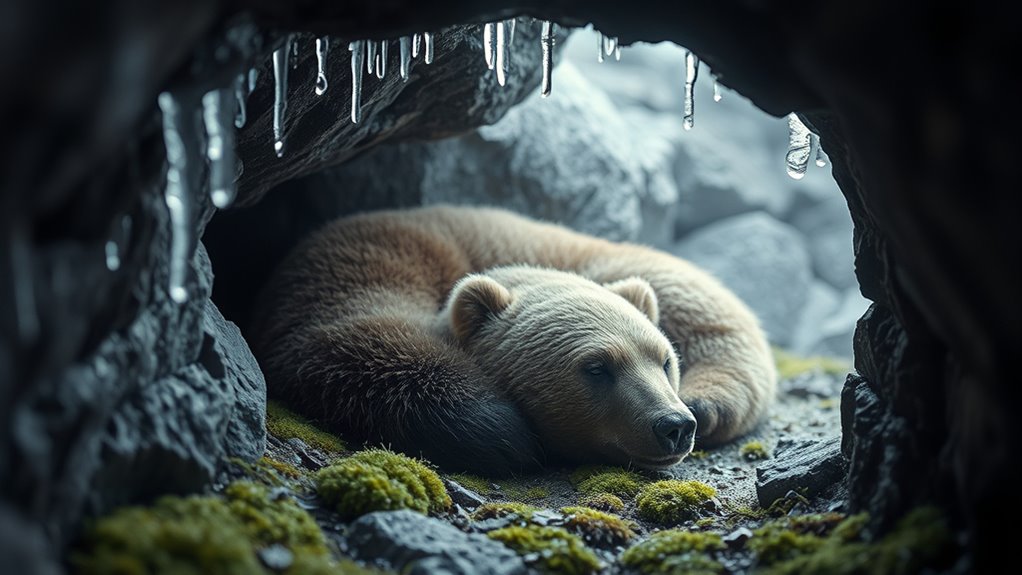
When you think about hibernation, consider how animals drastically change their metabolic rates and regulate their body temperatures.
These adaptations are essential for survival during extreme conditions, allowing them to conserve energy and endure long periods without food.
Understanding these physiological processes gives you insight into the remarkable strategies animals use to thrive in harsh environments.
Metabolic Rate Changes
As temperatures drop and food becomes scarce, many animals undergo remarkable changes in their metabolic rates to survive the harsh conditions of winter. These metabolic rate changes are essential for energy conservation, with some hibernators reducing their rate to just 2-10% of normal levels. Body temperature may also plummet, with Arctic ground squirrels reaching -3°C.
| Species | Heart Rate (bpm) | Metabolic Rate (%) |
|---|---|---|
| Arctic Ground Squirrel | 3-10 | 2-10 |
| Black Bear | 8-12 | 25-30 |
| Hedgehog | 20-30 | 10-20 |
| Fat-tailed Dwarf Lemur | 20-30 | 5-15 |
| Common Dormouse | 40-50 | 10-15 |
These adaptations enable survival for extended periods without food.
Temperature Regulation Mechanisms
To survive the frigid months of winter, animals rely on intricate temperature regulation mechanisms during hibernation. These mechanisms allow body temperature to drop considerably—sometimes by 10-30°C—helping conserve energy.
Smaller hibernators, like Arctic ground squirrels, can lower their temperature to around -3°C, showcasing their remarkable adaptability. During this state, metabolic rates plummet to as low as 1% of normal levels, permitting survival on stored fat or food reserves without foraging.
The shift into and out of hibernation involves complex hormonal and neural changes that precisely regulate temperature, heart rate, and metabolic processes. Unique species, like bears, experience minimal temperature drops and remain alert, demonstrating varied strategies to cope with extreme cold while maintaining energy efficiency.
Notable Hibernating Species
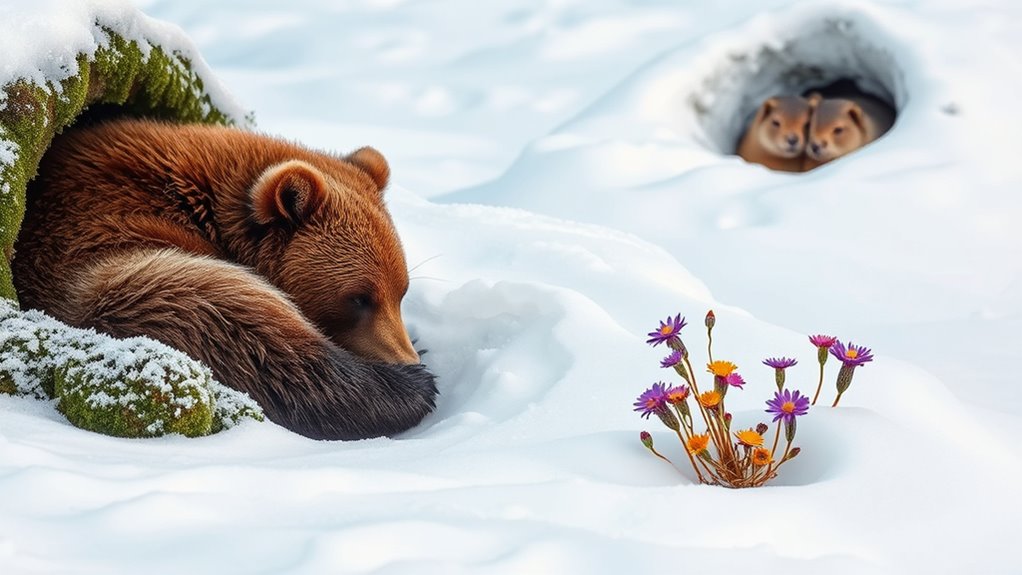
Hibernating species showcase captivating adaptations that allow them to survive harsh conditions.
Take the American black bear, for example; it can hibernate for up to 100 days with minimal body temperature changes, sparking debate on its true hibernator status.
Arctic ground squirrels, on the other hand, can hibernate for seven months even at -3°C, undergoing notable metabolic drops.
Edible dormice are among the longest hibernators, often resting for over 10 months to evade birds of prey.
Curiously, common poorwills are unique hibernating species among birds, considerably reducing their body temperature.
Finally, mountain pygmy-possums hibernate under snow, adapting to extreme cold by lowering their body temperature to as low as 2°C.
Each of these hibernating species showcases incredible survival strategies.
The Role of Hibernation in Predator Avoidance
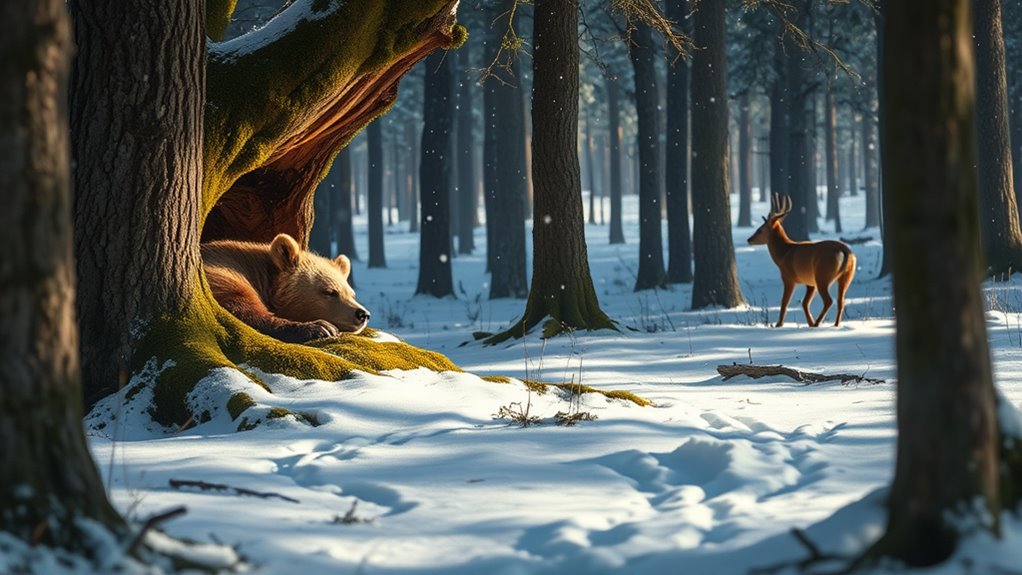
Hibernation isn't just about conserving energy; it's a clever way for animals to avoid predators. By reducing their activity, they minimize their chances of being spotted, which can lead to longer lifespans.
You'll see that different species have unique hibernation patterns, all shaped by their specific predator challenges.
Predator Evasion Strategies
While many animals face the constant threat of predators, some have developed the remarkable ability to hibernate as a means of evading danger. Hibernation serves as a vital predator evasion strategy, particularly for species like edible dormice that need to avoid birds of prey during vulnerable periods.
Some hibernators, such as Arctic ground squirrels, even wake periodically to forage or mate, balancing energy conservation with predator avoidance. This adaptation enhances survival rates by minimizing exposure to predators during resource-scarce times.
Additionally, hibernating animals experience significant drops in metabolism and body temperature, making them less detectable and less active. By entering this state, they effectively reduce their risk of predation, showcasing the evolutionary importance of hibernation in the animal kingdom.
Lifespan Extension Benefits
As animals enter a state of dormancy, they not only evade predators but also reveal potential lifespan extension benefits. By choosing to hibernate, small mammals like edible dormice minimize their exposure to threats, allowing them to conserve energy and increase their longevity.
The physiological changes during hibernation, such as lowered metabolic rates and body temperatures, help these creatures remain hidden and safe from predation. Periodic waking to forage or mate balances energy conservation with survival needs, illustrating a clever adaptation.
Research suggests that this ancient trait enhances predator avoidance, contributing to the longer lifespans observed in many hibernating species. Ultimately, hibernation serves as a strategic survival mechanism that greatly impacts their lifespan and overall well-being.
Seasonal vs. Daily Torpor: Different Approaches
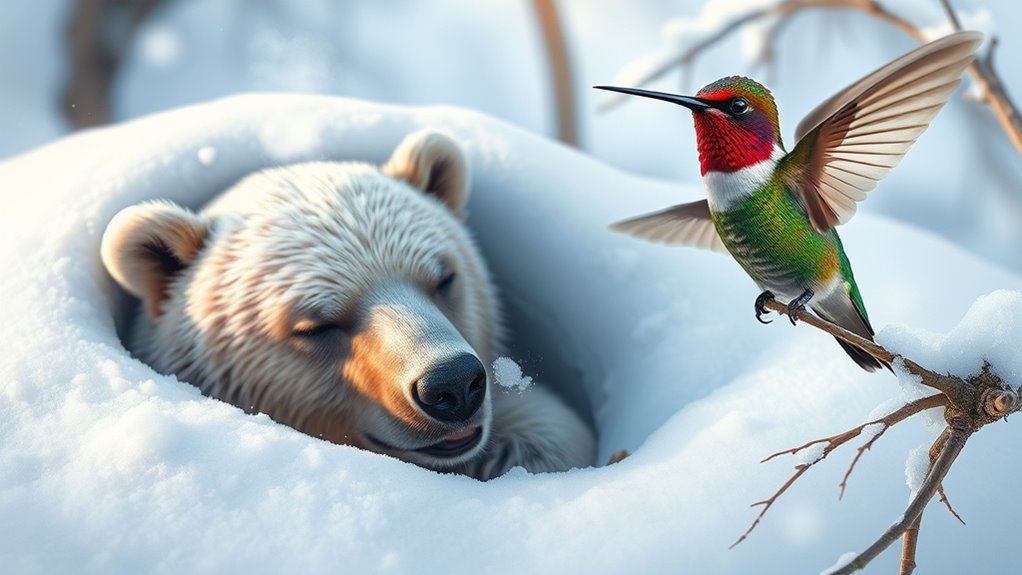
When it comes to survival strategies in harsh environments, animals adopt different approaches through seasonal hibernation and daily torpor.
Seasonal hibernators, like Arctic ground squirrels, may sleep for up to seven months to conserve energy during extreme weather and food shortages.
In contrast, daily torpor is a short-term, hibernation-like state. Animals such as certain birds and small mammals reduce their metabolic rates for just a few hours or overnight when temperatures drop or food is scarce.
While seasonal hibernation involves significant physiological changes, daily torpor requires only minimal adjustments, with body temperature drops being less extreme.
This allows animals to efficiently manage energy expenditure during brief cold spells without the extensive dormancy of longer hibernation periods.
Hibernation in Unlikely Places: Australian Species
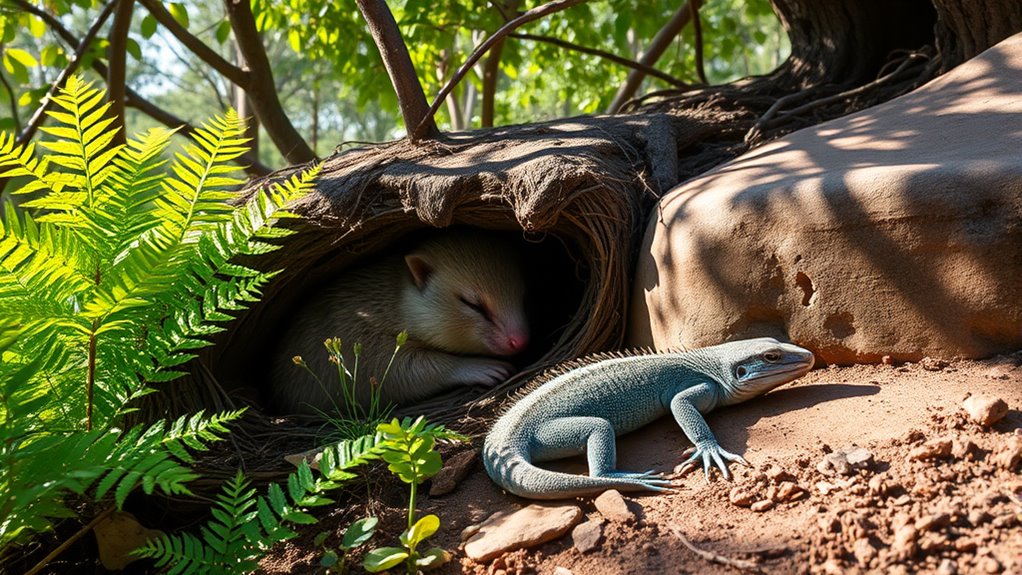
You might be surprised to learn that some Australian species, like echidnas and mountain pygmy-possums, have unique hibernation strategies that help them survive harsh conditions.
These adaptations showcase how animals can cope with climate challenges while highlighting the conservation issues they face.
Understanding their hibernation behaviors is vital for protecting these fascinating creatures in a changing environment.
Unique Australian Hibernators
While many people associate hibernation with cold climates, Australia surprises us with its unique hibernators.
Echidnas, once thought to be non-hibernators, have been seen entering a hibernation-like state, lowering their body temperatures to conserve energy during colder months.
Mountain pygmy-possums hibernate under snow, considerably reducing their body temperatures and relying on fat reserves to survive harsh winters.
The fat-tailed dwarf lemurs, unique to Australia, can hibernate for up to eight months during the dry season to cope with food scarcity.
Even insectivorous bats in Australia demonstrate hibernation behaviors, challenging previous misconceptions about these species.
This discovery highlights the diverse habitats and ecological roles of these fascinating animals, proving that hibernation exists in unexpected places.
Climate Adaptations and Strategies
Hibernation in Australian species showcases remarkable climate adaptations and strategies that challenge our understanding of these animals. For instance, echidnas have been observed engaging in hibernation, defying previous assumptions about their behavior.
Meanwhile, mountain pygmy-possums hibernate under snow, lowering their body temperatures to around 2°C to survive harsh winters. This hibernation serves as an energy conservation strategy, allowing these species to endure food scarcity and extreme temperatures.
However, climate change poses a threat, as thinner snow cover reduces insulation for their nests. Research into the hibernation behavior of these unique Australian animals reveals crucial insights into their evolutionary adaptations, showcasing how they navigate diverse and challenging environments to survive.
Conservation Challenges Ahead
As climate change intensifies, Australian hibernating species face unprecedented conservation challenges that threaten their survival.
You might be surprised to learn that echidnas have been found to hibernate, showcasing their adaptability. However, mountain pygmy-possums, relying on snow for insulation, struggle as climate change leads to thinner snow cover, increasing their vulnerability.
The warming climate invites more predators during milder winters, further endangering these hibernators. Additionally, early awakenings caused by rising temperatures may force them to emerge without sufficient food, raising starvation risks.
Conservation efforts are essential to safeguard these unique species and their habitats, as climate change continues to disrupt their natural behaviors and survival strategies. Protecting them is critical for maintaining Australia's ecological balance.
Climate Change and Its Impact on Hibernators
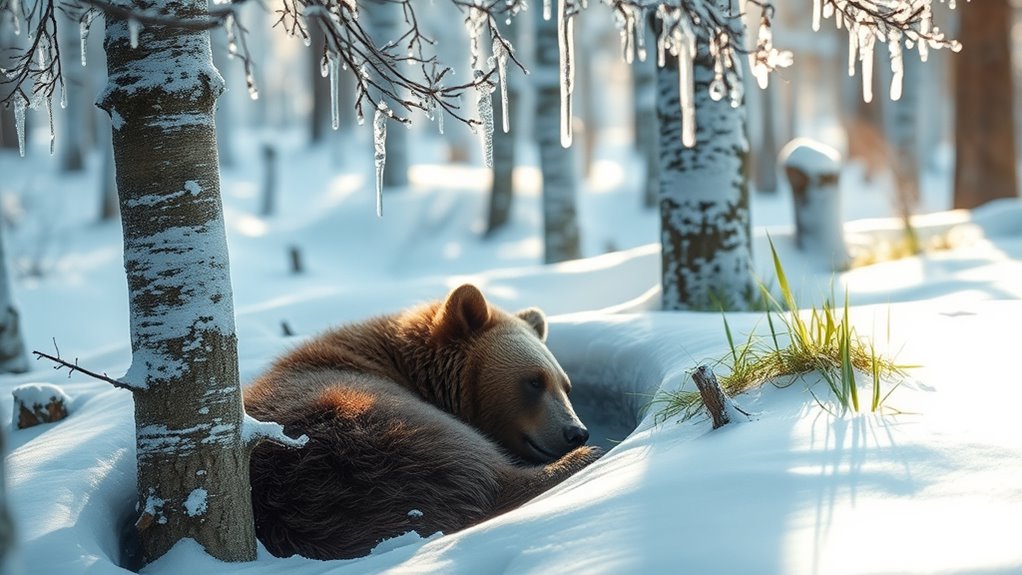
Climate change greatly alters the hibernation landscape for many species, posing serious challenges to their survival. As a result, you might notice three key impacts on hibernating animals:
- Milder Winters: Thinner snow cover reduces insulation, making hibernators like the mountain pygmy-possum more vulnerable to temperature fluctuations.
- Premature Awakening: Warmer springs can cause hibernators to wake up too early, leading to potential food shortages if resources aren't ready.
- Increased Predation: Milder winters mean more predators are around, putting hibernating animals at greater risk when they emerge or wake periodically.
These changes disrupt hibernation patterns, affecting survival rates and reproductive success.
Ongoing conservation efforts are essential to protect these vulnerable hibernating species as the climate continues to shift.
The Evolutionary Significance of Hibernation
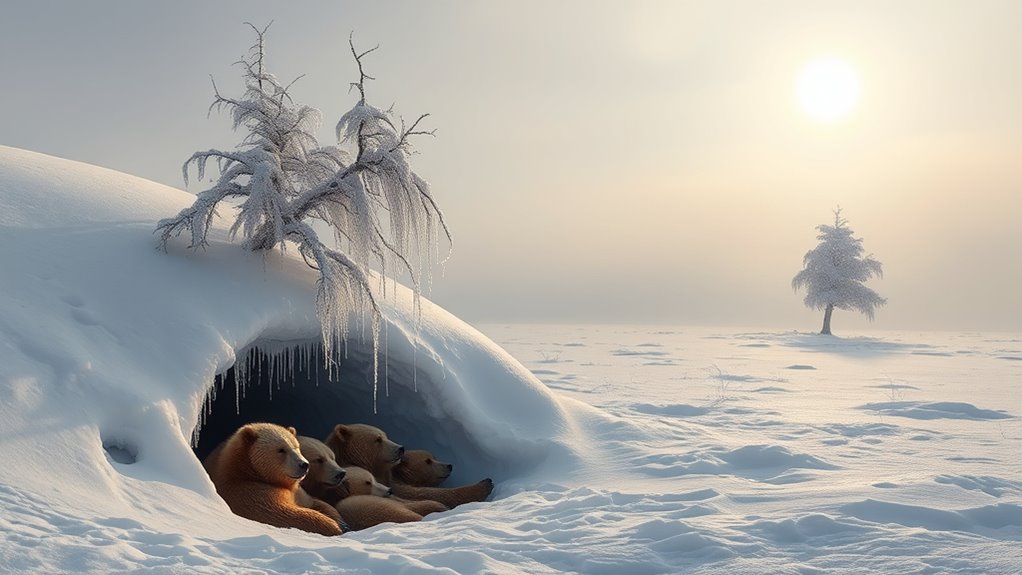
While many animals face harsh winters, the evolutionary significance of hibernation reveals how this remarkable adaptation has allowed species to thrive in challenging environments.
Hibernation, believed to be an ancient survival strategy, helps small mammals escape extreme weather and food shortages while conserving energy. This strategy also aids in predator avoidance; species like edible dormice hibernate to evade birds of prey, ultimately contributing to their longer lifespans.
Arctic ground squirrels demonstrate significant metabolic and temperature drops during hibernation, showcasing evolutionary adaptations that enhance survival in severe climates.
Research indicates that hibernation is an adaptive trait across various mammalian subclasses, underscoring its importance in the evolutionary history of warm-blooded animals as an essential mechanism for resilience and energy conservation.
Potential Medical Insights From Hibernation Research

Hibernation research offers fascinating potential for medical advancements, especially when you consider how the biological processes of hibernating animals can inform human health.
Here are three key insights:
- Tissue Preservation Capabilities: Hibernators exhibit remarkable tissue preservation, which could improve organ preservation techniques for transplants.
- Muscle Maintenance: Understanding how hibernators avoid muscle deterioration might lead to new treatments for people who are bedridden or immobilized.
- Resilience Insights: Studying the metabolic and temperature regulation in hibernators could reveal new therapies for conditions related to these processes, including Alzheimer's disease.
These insights into hibernation could revolutionize medical practices, providing innovative solutions to longstanding challenges in health care.
Future of Hibernation: Conservation and Adaptation Strategies
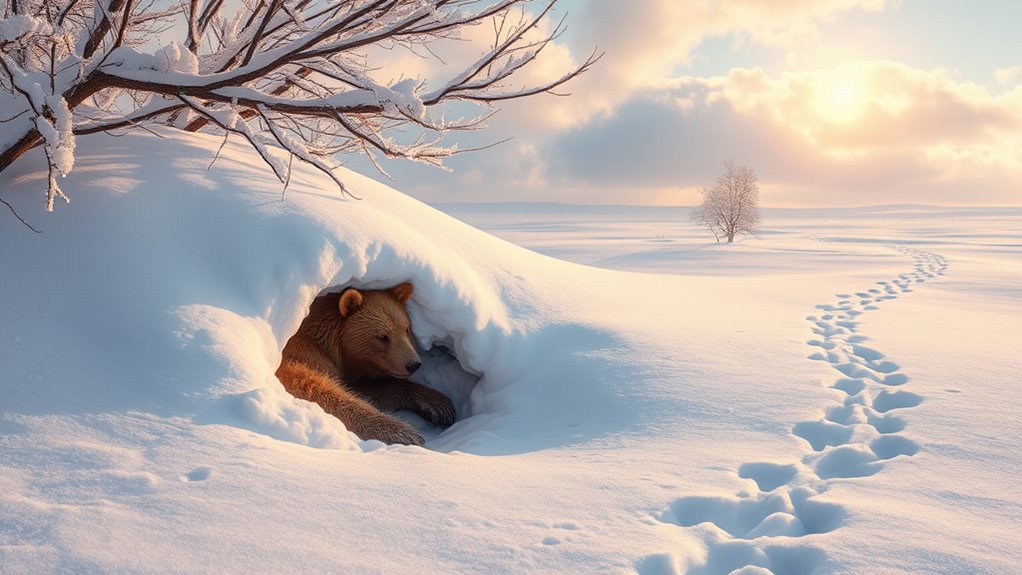
As the world warms, hibernating species face increasing challenges that threaten their survival. You might wonder how we can help these animals, like the mountain pygmy-possum, which rely on snow cover for insulation during hibernation.
Conservation efforts are vital for protecting vulnerable species from predators and ensuring they don't wake too early when food's scarce. Research is exploring how these animals adapt to climate change, focusing on their physiological resilience and survival strategies.
Conservation is essential for safeguarding hibernating species from threats and understanding their adaptation to climate change.
By understanding the impacts of climate change, you can support broader conservation strategies that preserve habitats and food sources. Ultimately, it's about helping hibernators conserve energy and thrive in an ever-changing world.
Your engagement in these efforts can make a real difference.
Frequently Asked Questions
Why Do Some Animals Hibernate and Others Don T?
Some animals hibernate to conserve energy during harsh conditions, while others don't due to different survival strategies.
You might notice that smaller animals often hibernate because they lose heat faster, needing to save energy.
Larger animals, however, may not require true hibernation, as they can wake easily and find food.
In milder climates, some species choose to migrate or forage instead, adapting to their specific environments and resources.
What Is the Purpose of Hibernation in Animals?
Imagine curling up in a cozy blanket, shutting out the world's chaos—this is what hibernation offers animals.
The purpose of hibernation is to conserve energy during tough times, like harsh winters or food shortages. By slowing their metabolism and lowering body temperature, they survive when resources dwindle.
It's not just about survival; it's a strategic retreat that also helps them avoid predators and sometimes wake for essential foraging or mating.
What Is the Point of Hibernation?
The point of hibernation is all about survival. When temperatures drop and food becomes scarce, animals enter a state that allows them to conserve energy.
Their metabolism slows down considerably, which helps them endure long periods without eating. By relying on stored fat, they can avoid starvation and harsh conditions.
Essentially, hibernation serves as a natural strategy to guarantee their survival during challenging times, allowing them to emerge when conditions improve.
Do Animals Ever Wake up During Hibernation?
Imagine a deep sleep that isn't quite so deep. Yes, many animals do wake up during hibernation!
You'll find that species like Arctic ground squirrels periodically rouse themselves to maintain their health. They might stretch, forage, or even mate before slipping back into their slumber.
Factors like temperature and food availability influence how often they wake. So, hibernation isn't just a long nap; it's a strategic rest with moments of activity.
Conclusion
To sum up, hibernation isn't just a fascinating survival strategy; it's a remarkable adaptation that many animals rely on to thrive. Did you know that over 100 species of mammals, including bears and bats, enter hibernation to escape harsh winter conditions? As climate change threatens these hibernators, understanding their unique physiology could lead to breakthroughs in conservation efforts. By preserving these animals and their habitats, we not only protect biodiversity but also gain valuable insights into resilience and survival.
